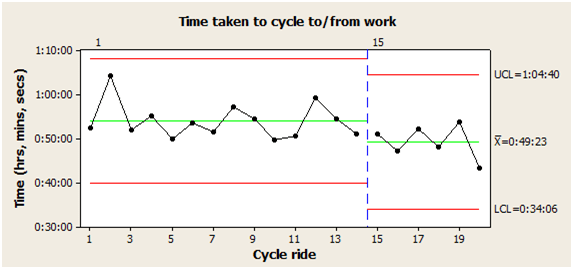 So a few people have sent me the link to the recent Steve Hansen interview* (20 mins. long) – thanks for that, it’s very good and worth writing this post about.
So a few people have sent me the link to the recent Steve Hansen interview* (20 mins. long) – thanks for that, it’s very good and worth writing this post about.
* For those of you who live on a different planet – Hansen is the current coach of the All Blacks (that’s a rugby team!) and is currently at the 2015 World Cup in England.
Listening to the interview shows how truly special the All Blacks environment is. I pick out below what I think are key things said that are applicable to any/ every organisation that wants to continually strive towards its true purpose:
(Quotes are in blue text with my thoughts following in black)
Interviewer’s Question: “…What defines Steve Hansen’s All Blacks?”
Steve Hansen’s Response: “It’s not Steve Hansen’s team…it’s about a collective group who are trying to do something [purposeful]….we have to set ourselves some lofty goals, and some people may say that’s arrogant, but I think if you want to achieve something in life, you’ve got to set big goals…”
This links to the setting of a clear challenge* such that everyone involved understands and wants to drive towards it, not for the leader but for themselves.
As such, this challenge has to be:
- Meaningful: about making the world a better place in some way;
- Tangible: easily relevant to everyone who is to be involved, not distant and abstract; and
- Real: not a fake side-act for something else (see POSIWID).
*The challenge is not about a solution – you should know where you want to go but not impose how you believe you are going to get there (See How to have a successful journey).
Interviewer’s Question: “Is that one of the defining factors – the fact that it is a collective?”
SH Response: “…for this team to really play well, we need to be as one and the team has to be greater than the individual…”
This fits perfectly with the idea of systems thinking. The All blacks are a system made up of component parts – 15 individuals on the pitch, 7 on the bench, more in reserve, coaches and back room staff.
They want, and need, to optimise the system, not its component parts.
Every player will want to be picked in the 1st 15…but will work together even if they are not. If Dan Carter isn’t picked for a game, you’d still expect him to use all his 100+ caps of experience to help his replacement…and he most certainly will – and if you doubt it, look for the water boy!
Interviewer’s Question: “You’ve talked about humility and..devolving leadership…as the coach…you have to give up some control. Is that right?”
SH Response: “Well, it might seem like you have to give up control, but, really, it’s not about control. It’s about everybody going in the same direction, trying to achieve the same thing, so you’re not having to control anyone to do that. They want to be alongside you. And in some cases, you want them to be in front of you because they’re the people that are out there playing, and they’ve got to make the big decisions in the moment in the contest. And all we [the coaches] are is here to facilitate an environment…that is conducive to them being able to play.”
This echoes everything posted on this blog about the important thing being the environment. We need to move away from a ‘command and control’ logic (and all its management instruments of torture) and replace it with a realisation that Purpose + Environment = the starting point!
Then, and only then, will the whole team truly work together for the good of all.
Purpose is necessary. Environment is necessary. Neither, on its own, is sufficient.
The other point is that it is about the people ‘at the Gemba’ making decisions. The coach’s job is just to provide the direction and support to enable this.
Interviewer’s Question: “How do you, Steve Hansen, see…get the feel for what a player needs?”
SH Response: “Well, once we’ve talked about the team coming first, the team’s made up of a whole lot of individuals, so you try and do your best to get to understand the individuals and what makes him or her tick…You’re really looking at them, ‘how am I going to get the best out of that person?’ along with the other guys that are helping you do that. It’s about watching them every day…you just know after a while when you’re rubbing shoulders with them all the time what individuals need and what they don’t, and I guess that’s the art of coaching.”
This echoes what was written in People are people so why should it be. We are all different, we have different strengths and weaknesses – the task is to develop each and every one of us, not judge and compare us!
Interviewer’s Question: “…you spend a lot of the time motivating the team…”
SH Response: “Interestingly enough I don’t think my job is to motivate the team. My job is to create an environment where motivated athletes can perform…”
I think Hansen might have read a bit of McGregor and Herzberg
He understands that I can’t motive you…but I can strive to provide an environment that has the best chance of you getting the best out of yourself for the good of you and your team.
I very much doubt that Hansen uses the management tools of cascaded personal objectives, individual targets, judgement and extrinsic rewards. Can you imagine him taking, say, SBW (that’s one of the players) to one side and saying “Right Sonny, your target this game is 6 offloads, 4 crunching tackles and 2 tries and if you do it, I’ll give you a sports car”. This would destroy the collaboration that he wants from his collective. It would make it about the individual rather than the team. It would make it about hitting the target and then doing no more.
Who’s had a son or daughter playing sport and seen what happens when a parent tries to motivate their child with, say, money for scoring a try (or goal or…). It is a coach’s worst nightmare! How on earth can they persuade this individual to get that ‘dangling carrot’ out of their mind to pass that ball?!
Interviewer’s Question: “Everyone wants to get better. I mean, how do you actually do it?”
SH Response: “I think it’s about living it every day. You create an environment where you’re living every day trying to get better and you’re not accepting that what you’re doing today’s good enough. And I think if you keep pushing that and everyone’s bought in to it first and foremost and then you keep pushing it and driving it, it’s achievable. But the minute you decide that ‘Okay, we’ve arrived’ someone’s just going to draw [go] straight past you…”
He understands that it is a never-ending journey and the moment you think ‘aren’t we just great!’ then you are in trouble.
It’s also about looking at yourselves and what you are doing rather than trying to be like somebody else (see Benchmarking – worse than cheating)
…and finally:
Whether they achieve their lofty goal (retaining the world cup) or not, I think you’d agree that they appear to be going about it in a fantastic way.
When I look back at Steve Hansen’s interview I think ‘he really gets it’. I also believe him – I don’t think he is just saying it…and, as such, I would follow him (I just need to get good at rugby now!!!).
If you didn’t know differently, you could easily think that Hansen was a student of Deming and Ohno …and who knows, he might be!








